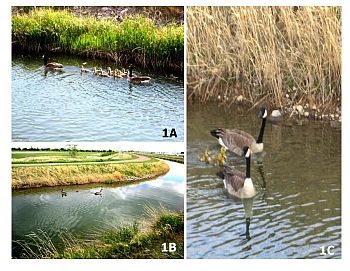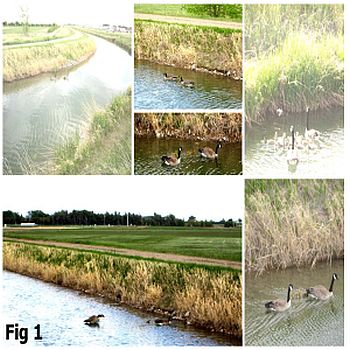Human-wildlife conflict is a significant conservation issue. As human populations continue to increase, habitats previously occupied by wildlife are repurposed for human use. This can cause displacement of wildlife into human inhabited areas or provide suitable conditions for pest species, such as rats, raccoons and pigeons, to multiply unchecked. Close contact between people and wildlife leads to opportunities for conflict. The very survival of many wildlife species is in jeopardy because of conflict with humans. Types of conflict vary widely, depending on the species involved and the circumstances of each individual situation. There are just as many methods available to diminish these conflicts. Regrettably, hostility toward wildlife often endures even after conflict issues are successfully addressed. Human perceptions of the risk involved with wildlife presence and the damage that wildlife can inflict is influenced by many social issues. These social issues may include childhood experiences with wildlife, cultural beliefs and human-human conflicts. To successfully mitigate human-wildlife conflict issues long term, thoughtful consideration of the social issues affecting the local community and the mitigation strategies available for the particular situation must be understood (Dickman, 2010).
Comprehensive understanding of the species and the nuances of the particular conflict situation are necessary for successful resolution. After discussing the human factors involved in wildlife conflict, this study will focus on identifying trends involved in conflict situations between humans and avian species, the mitigation strategies available to encourage humans and avian wildlife to coexist, and the social issues that fuel conflict situations with avian species.
Stakeholders
Different stakeholders can have conflicting concerns. It may be difficult to objectively assess the importance of these concerns and decide the best way to prioritize them. Quantifying these priorities using multiple criteria analyses may help decision makers assess priorities more fairly (Redpath et al, 2003). In the United Kingdom, Redpath and colleagues (2003) used multiple criteria analysis and resolution techniques to address conflicts between conservationists working to protect the Hen Harrier (Circus cyaneus) and game managers concerned with providing sustainable populations of Red Grouse (Lagopus lagopus scoticus) for hunting. Raptors, such as the Hen Harrier, reduce the number of Red Grouse available for harvest by game hunters. The stakeholders agreed to attend a weekend symposium where they could discuss their individual priorities. These priorities were organized and participants were asked to quantitatively rank the importance of each. This ranking allowed facilitators to demonstrate where the groups agreed, providing a foundation for actions that could be taken to benefit both parties. The greater benefit of the project was to initiate constructive dialog between the stakeholders and alleviate some of the mistrust that existed between them (Redpath et al, 2003). The symposium was a first step to long term solutions that required interdisciplinary approaches and cooperation between all parties involved, and serves as a model for other conservation projects. Stakeholders can range from a few individuals to organizations, and from local to world communities. Mitigating human-wildlife conflict issues demands acknowledgement of all stakeholders involved and careful consideration of the different perspectives these stakeholders have on the situation. In the past it has not been uncommon for conservation organizations or government entities to move into an area and make wide-sweeping decisions that affect the local community, assuming the community will cooperate. Instead, an increase in hostility toward the wildlife often occurs (see Table 1) (Dickman, 2010).
Table 1: Stakeholders that could have interest in conservation initiatives and the unique perspectives they bring to the conversation.
![]()
Actual Human Impacts
Conflicts with wildlife can have significant impacts on the people involved, with actual risks coming in many forms. The health and safety of residents is the highest priority in any conflict situation. Health and safety issues include attacks on people by wildlife, risks of injury from collisions with wildlife, contamination of human water or food supplies from feces and direct disease transmission from wildlife to humans (Begg & Kushnir, 2011).
Next, there are biological risks. Biological risks include predation or disease transmission from wildlife to livestock or pets. Health, safety and biological risks usually provide the strongest arguments for the removal of wildlife from an area and are less likely to face harsh challenges from opposing points of view.
Psychological risks may be associated with human health issues. The fear and distress suffered by some people residing near dangerous wildlife can destroy their quality of life and exacerbate conflict situations. Psychological risks should be addressed sensitively as a legitimate human impact if long-term conflict mitigation programs are to succeed.
Then there are economic risks. Economic risks can include a broad range of impacts such as loss of income or livelihood, loss of property, and loss of economic opportunities by the impositions of wildlife. Economic risks often fuel bitter conflicts between stakeholders with conflicting priorities and can lead to serious social and cultural conflict situations (Omondi, 1994).
Human-wildlife conflicts that involve social and cultural risks are incredibly difficult to manage because the real issues fueling the conflict are often less about the wildlife and more about the human-human conflicts that surround the wildlife issue (Dickman, 2010). Social risks often involve the marginalization of a group of people by authorities, especially when the group does not feel they have a voice in the situation. The group may be suffering economic losses because of conservation initiatives or may have been forced to relocate. These situations can lead to civil disobedience and escalated conflict. Social issues can also involve a group’s feelings of entitlement over wildlife or a species. National heritage or religious attitudes may be associated with wildlife conflict (Hazzah, 2006). As an example, In the United States the Bald and Golden Eagle Protection Act prohibits, among other things, the possession, use or sale of eagle feathers (U.S. Fish and Wildlife Service, 2009). In response to opposition from Native Americans, a memorandum was added to the law in 1994 permitting the use of eagle feathers for Native American religious and cultural purposes (U.S. Fish and Wildlife Service, 2009).
Cultural risks are essentially the same as social risks, but involve deeply ingrained beliefs in the collective identity of certain social groups. An example of a human-wildlife conflict from our own history that was fueled by cultural implications was the conflict between European settlers and Native Americans surrounding the North American Bison. The Europeans massacred bison for sport and profit, harming the Native Americans that depended upon the bison for survival (Taylor, 2011). Hypothetically, if the Europeans had later wanted to implement a conservation program where Native Americans could no longer hunt bison, the conflict that arose would be less about the bison and more about the conflict between the two social groups.
Issues That Affect Attitudes and Perceptions
A considerable challenge in addressing human impacts is accurate assessment of the degree of actual risk involved versus the perceived risk by those affected (Boholm, 1998). The relationship and experience people have with nature will influence how they interact with nature and will affect their degree of tolerance when conflict issues arise. Many factors influence public opinion regarding wildlife conflict issues and these opinions are often emotionally charged. Giving stakeholders the opportunity to express their opinions and respectfully validating that their feelings have merit can help them find common ground and promote cooperation.
There are several common factors that can affect public attitudes and their perceptions of loss and risk. Socio-economic factors such as age, sex, level of education, wealth and the system of land ownership present in the affected area are all important influences on the individual’s perceptions (Omondi, 1994). The person’s childhood experiences with nature will also influence their perceptions in adulthood. Children that had the opportunity to spend time outside connecting with nature are more likely to grow into adults that have positive attitudes and empathy for wildlife (Sobel, 1996).
Past personal experiences will obviously affect attitudes. If an individual has suffered a dangerous close encounter, property damage or an economic loss related to wildlife, they will likely have strong opinions related to conservation efforts. They are also in a position to greatly influence the opinions of others in their community. The severity of any negative experiences will affect attitudes as well. Was an actual loss sustained or was the individual just inconvenienced? What was the nature of past conflict situations? The degree of the problem might not be as severe if it only occurs for a short duration, such as seasonally, versus a problem that persists constantly. The person’s past experience with conservation initiatives will impact their trust in future programs. Were previous government compensation programs administered fairly? Were previously attempted damage control measures effective? Did the local community benefit from ecotourism programs? Failure of previous programs will affect support for future programs (Dickman, 2010).
Attitudes can also be influenced by indirect sources such as mass media, the sharing of experiences from other members of the community, and the historical conflicts from the individual’s culture. When Steve Irwin was accidently killed by a stingray in 2006, Australian conservation officials had to plead with the public to stop killing stingrays out of vengeance (Johnson, 2006). Sensationalized news stories, exaggerated testimonials and cultural folklore can have significant impact on individual attitudes toward wildlife (Prokop et al, 2009).
Types of Human-Avian Conflict
The types of human-wildlife conflict that commonly involve avian species fall within several broad categories. Certain species are associated with particular types of conflict because the type of conflict is often associated with the natural ecology of the species. Each event should be evaluated on the specific circumstances of the situation (see Table 2).
Table 2: The varying types of human-avian conflict, and the species and details associated with that form of conflict.
![]()
![]()
![]()
![]()
![]()
References for this article can be found on the author’s bio page.
Article submitted by Jackie R. Bray, Graduate Student MA Biology – Project Dragonfly at Miami University Cincinnati Zoo & Botanical Garden – Cincinnati, Ohio
Continued in Part 2
Related posts:
- Solving Human-Avian Conflicts & Encouraging Coexistence (Part 2)
- Avian Edutainment at Weltvogelpark Walsrode
- The 6th Annual Avian Seminar Hosted by NIPS

















